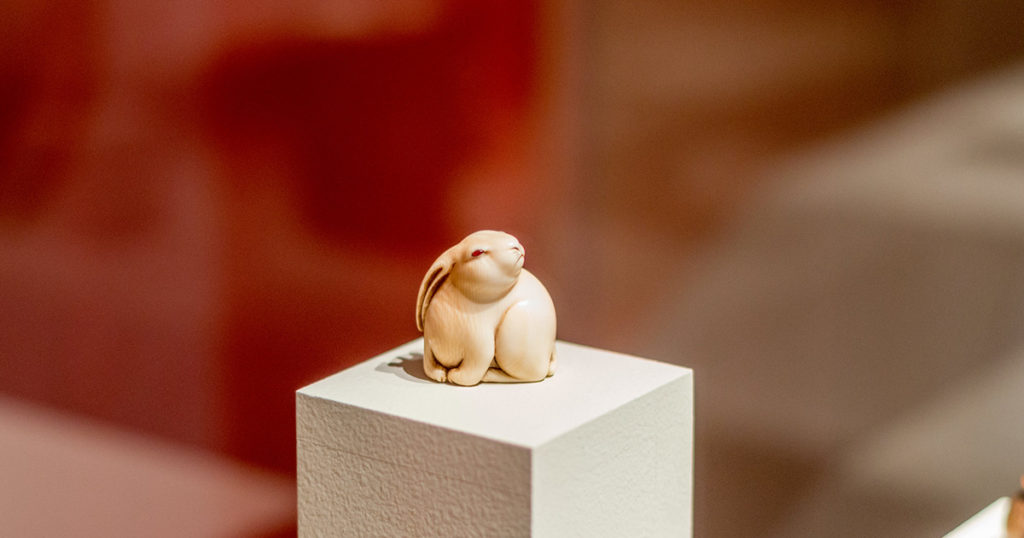
Letters to Camondo by Edmund de Waal; Farrar, Straus and Giroux, 192 pp., $28
Edmund de Waal appeared on the literary landscape a decade ago with the publication of his curiously titled first book, The Hare with Amber Eyes. By word of mouth, this elegant investigative memoir found an audience of readers bewitched by its limpid, quirky prose and the unexpected turns of the European family saga it discloses so artfully.
The amber-eyed creature in the title is a tiny Japanese ivory figurine, known as netsuke whether singular or plural. De Waal’s wealthy French ancestor, art collector Charles Ephrussi, bought the hare and 263 other netsuke and lodged them in a vitrine in his Paris mansion. The figurines then migrated as a wedding gift to cousins in Vienna, whose lives were upended by the Nazis in the late 1930s, and then to safety in the hands of another descendant in Tokyo, where the indefatigable de Waal finds them intact. The book’s subtitle is A Hidden Inheritance.
The netsuke’s pilgrimage is an ingenious way to pull the reader through the tumultuous odyssey of its owners. The Hare is the story, at heart, of highly assimilated Jews making their distinctive mark on French culture and society—and then the story of how their perfect assimilation ultimately didn’t count. Only their Jewish heritage did.
This is all necessary preface to de Waal’s new book, a kind of companion to The Hare— rabbit redux, if you will. Letters to Camondo is a refraction of the first book yet requires no knowledge of it. It follows a discrete and nearly parallel track concentrated on another stupendously rich Parisian art collector, Moïse de Camondo, and his family, who lived 10 doors away on rue de Monceau and became linked to the Ephrussis by marriage. “This is the parallel, dusty journey of our families,” from Constantinople and Odessa, writes de Waal, the scion of both.
In Belle Epoque Paris, these citizens of the new high-bourgeois precincts surrounding the Parc Monceau built splendid small palaces reflecting the standing and refinement of their occupants. Today one may visit the house Moïse de Camondo built in 1910 and appreciate its architectural and decorative originality, no expense spared to create the discerning sumptuousness that de Waal so admires.
Letters to Camondo is addressed explicitly to that patriarch—he’s you in the book. As Moïse is long dead, this makes for a one-sided conversation with a ghost. The narrator is interrogative and familiar, as well as highly digressive, even dreamy and precious. Letters to Camondo, a slender book, reads like a long prose poem.
It’s hard not to gather, in reading either of these books, that the author is a ceramicist by principal vocation, well-regarded around the world. (His intervening book was about his passion for porcelain.) This explains one factor behind the charm and aesthetic singularity of his writing: De Waal is preoccupied, obsessed, besotted, by things. “I simply list these materials as they are pure poetry,” he confesses. They evoke in the author images so photographic that they might have been remembered rather than conjured a century later:
The calibration of the cup of chocolate brought on a lacquer tray. The whiteness of the apron and cap. The vegetables prepared for soup, the basket of wild strawberries, cleaned. A copper basin, scoured … The brioche is next to a glass jar of slightly toxic blue-green gherkins and a bunch of pink radishes; a wine glass is upended in a glass bowl with a gilded rim. They sit on a stone shelf and here there is pleasure.
Letters is strewn with such glimpses. In pointillist fashion the details shimmer into focus in an emerging portrait of an aesthete and philanthropist and banker who achieved his every dream and built his house to showcase his taste and success.
“I’m impressed by how you have done this,” the descendant tells his ancestor, after spending days and days in the house’s preserved public rooms and musty archives. “Spaces and art and light and scale and colour, rhythms and balance, energy and relaxation, intimacy and then grandeur. It is so much easier to do on a small scale and that is why vitrines work. You can reach in and move things around. This whole place acts as a vitrine in itself.”
But as with The Hare, de Waal’s real business is not (only) about the surface of things. “Constantinople is a lifetime away and you are a perfect Frenchman,” de Waal declares to Moïse. “You become part of the street, the neighborhood, the city, the country so perfectly, so delicately aligned, assimilated, that you disappear.”
Disappear is the word. The mansion on rue de Monceau was named for Nissim de Camondo, Moïse’s immigrant father and also his beloved son, who died young in uniform fighting for France in World War I. This was the poignant apotheosis of the family’s embrace of, and by, France. The house, bequeathed to the French state at the end of the patriarch’s life as a memorial to young Nissim’s sacrifice, becomes a memorial to Camondos who followed: In the succeeding generation, during the next world war, Moïse’s children and grandchildren were rousted from that gilded house and sent to die in Nazi death camps. Perfect assimilation only went so far.

